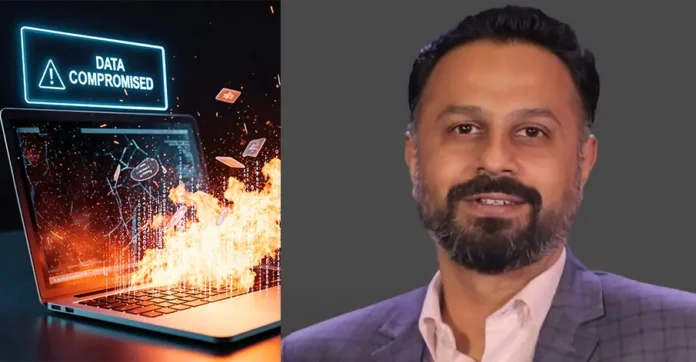
Understanding the Risk
The healthcare sector is a lucrative target for cybercriminals. Unlike financial data that can be reset or cancelled, stolen medical records hold long-term value. Cybercriminals can exploit Personal Health Information (PHI) for fraudulent claims, blackmail, and identity theft. Insider threats are particularly dangerous as employees have authorised access, making detection and prevention more complex.
The Scenario: A Critical Breach
A major health insurance company managing millions of records suffers a severe data breach when a disgruntled employee with privileged access sells sensitive health records on the dark web. Consequences include:
- Criminals use stolen medical identities for fraudulent claims, causing financial loss and regulatory scrutiny.
- Cybercriminals exploit high-profile policyholders using confidential health data.
- Authorities impose severe penalties for non-compliance with HIPAA (Health Insurance Portability and Accountability Act), DPDP (Digital Personal Data Protection) Act, and GDPR (General Data Protection Regulation) due to inadequate security measures.
The Challenges: Why Insider Threats Are Difficult to Mitigate
- As per PHI, claims and payment details are high-value target. Stolen medical identities can be used for long-term fraudulent activities.
- Insiders operate within authorized systems, making anomalies harder to identify
- HIPAA, DPDP Act, and GDPR require strict data protection measures, and Failure to protect PHI results in lawsuits, reputational damage, and substantial financial penalties.
Mitigation Strategies: Proactive Measures Against Insider Threats
- Implement Robust Insider Threat Monitoring
- Deploy User and Entity Behaviour Analytics (UEBA) to detect unusual data access patterns.
- Use Data Loss Prevention (DLP) tools to monitor and restrict unauthorized data transfers.
- Enforce Multi-Factor Authentication (MFA) to minimize access risks.
- Implement continuous auditing to track access logs.
- Strengthen Employee Awareness & Training
- Conduct mandatory security awareness programs to educate employees
- Ensure ethics training to highlight the legal and financial repercussions of data breaches.
- Encourage whistleblower programs for anonymous reporting.
- Enhance Data Encryption & Access Controls
- Encrypt PHI and claims data both in transit and at rest
- Apply Role-Based Access Control (RBAC) for high security access
- Conduct regular access audits to review and revoke unnecessary privileges.
- Leverage AI-Driven Threat Intelligence
- Leverage AI and ML for behaviour analysis and real time alerts.
- Integrate threat intelligence feeds to anticipate emerging threats.
- Establish a Zero-Trust Security Framework
- Segment networks to limit exposure in case of breach
- Monitor privileged user activities using dedicated Privileged Access Management (PAM) solutions.
- Require continuous authentication for sensitive transactions and access to critical systems.
- Strengthen Compliance with Data Privacy Regulations
- DPDP Act Compliance: Securely store and process personal data, restrict access, and enable data erasure mechanisms.
- Maintain comprehensive audit logs for compliance and to support forensic investigation.
Conclusion
The threat of insider-driven data leaks in the health insurance industry requires a multi-layered security approach. By integrating advanced monitoring technologies, robust governance frameworks, and employee education, organizations can mitigate the risks posed by insiders. Proactive implementation of Zero-Trust principles, AI-driven analytics, and strict regulatory compliance is essential to protect policyholder data, maintain trust, and avoid legal repercussions in an evolving cyber threat landscape.






